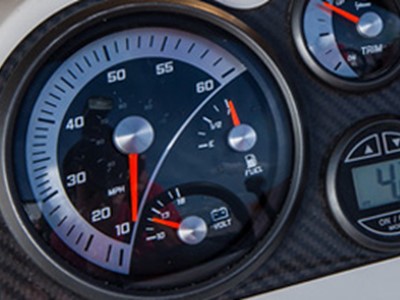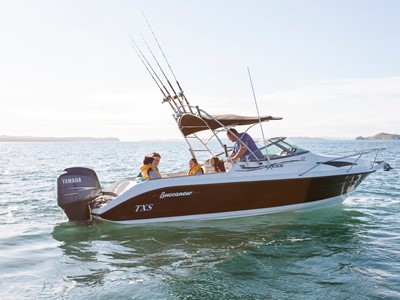When looking for a new battery, it might be tempting to buy the cheapest one available.
But like anything on your boat, quality matters and there's more to batteries than meets the eye.
In the market for a new marine battery? Get 10-20% off with Century Batteries, just give them a call on 0800 93 93 93 and tell them you're a Coastguard member.
Battery basics

Batteries generally fall into two camps: either starter batteries, or deep cycle batteries.
Starter batteries can be considered the 'sprinter' - they give lots of power quickly, but not for long. Their capacity is described in Cold Cranking Amps, a measure of how much starting power it has on a cold morning.
Technically, it's the number of amps a regular 12v battery can deliver for 30 seconds at below freezing temperature (-18 degC/0 degF), without dropping below 7.2v. The higher the CCA number, the better.
Starter batteries should never be run below 80% of their capacity.
Tackle box tip: some batteries might be measured in Marine Cranking Amps - it's the same measure as CCA, except measured at a warmer temperature (0 degC/32 degF). Because batteries perform better in warm (but not hot) temperatures, the MCA number is often 20-25% higher. Don't confuse the two though - remember to compare like-for-like!
Deep cycle batteries are the marathon runner of the battery world. They can deliver a good amount of power consistently, for long periods. They're usually measured in Amp-hours (Ah), and a good rule of thumb is to not discharge them below 50% of their capacity.
Marine batteries are built tougher, to suit the slamming around boats can take. They generally have much higher capacities than car batteries, with a higher reserve capacity to run on-board gear.
Most modern marine batteries are maintenance free, meaning they're completely sealed and you don't ordinarily need to top them up with distilled water.
Consider your gear's battery drain
Almost every day of the year, Coastguard volunteers are called out to assist boaties who have run their battery flat. Sometimes it's due to an electrical fault but much of the time it's boaties not remembering to keep some juice in the batteries, for starting up for the return journey.
When you go to replace your battery, consider how much gear you've got on board - take note of everything you can think of, from the important gear such as fish finder, nav equipment, bilge pump and VHF radio right through to the 'extras' such as fridge, extra lighting and auto pilot. The more gear, the more battery capacity you should be looking for - you might even need two batteries to run what you've got on board.
Keep your battery in good nick
Nothing ruins a good day on the water like not being able to start the motor at the end of the day. To keep your battery in good nick, here are some things to consider:
- Make sure your battery is properly installed. A boat can take a pounding, which means the battery will too. Minimise movement and water ingress by having the battery securely fastened in your hold.
- Keep terminals free of corrosion. Check terminal connectors regularly to avoid loss of conductivity.
Tackle box tip: grab a hold of the battery cables, and give them a gentle twist. If you get a 'brittle' feeling and they don't have much movement, they might have corrosion issues. Check them with a multimeter or get an electrical sparky to test them.
- Don't mix old batteries with new ones in the same battery bank. While it seems like this would increase your overall capacity, old batteries tend to pull down the new ones to their deteriorated level.
- Many batteries can lose as much as 30% of their charge over winter, and left un-maintained can lose even more charge. Keeping your batteries charged will help avoid this; leaving them in a discharged state for any length of time will damage them and lower their capacity.
- Trickle charging. If you're not going to be running the boat for a length of time, it's a good idea to set up a small solar charger for your battery - this helps keep it topped up, and in a healthy state. A small trickle charger should only run you $50 or so, a decent investment to keep more expensive batteries in good nick.
A whole range of things such as temperature, humidity conditions and type of battery all affect performance. Batteries don't like extremes of cold or hot weather, and high humidity can affect their charge. So keep an eye on their charge levels over time, and be proactive about replacing them.
Battery still giving you trouble on the water?
Remember, if things go wrong and you can't start your boat, Coastguard are here to help. Become a Member and receive free assistance for a flat battery or any other issues out on the water. We've got your back!
Boatie's Best Mate.
Get a Coastguard membership today for peace of mind when you’re out boating.




